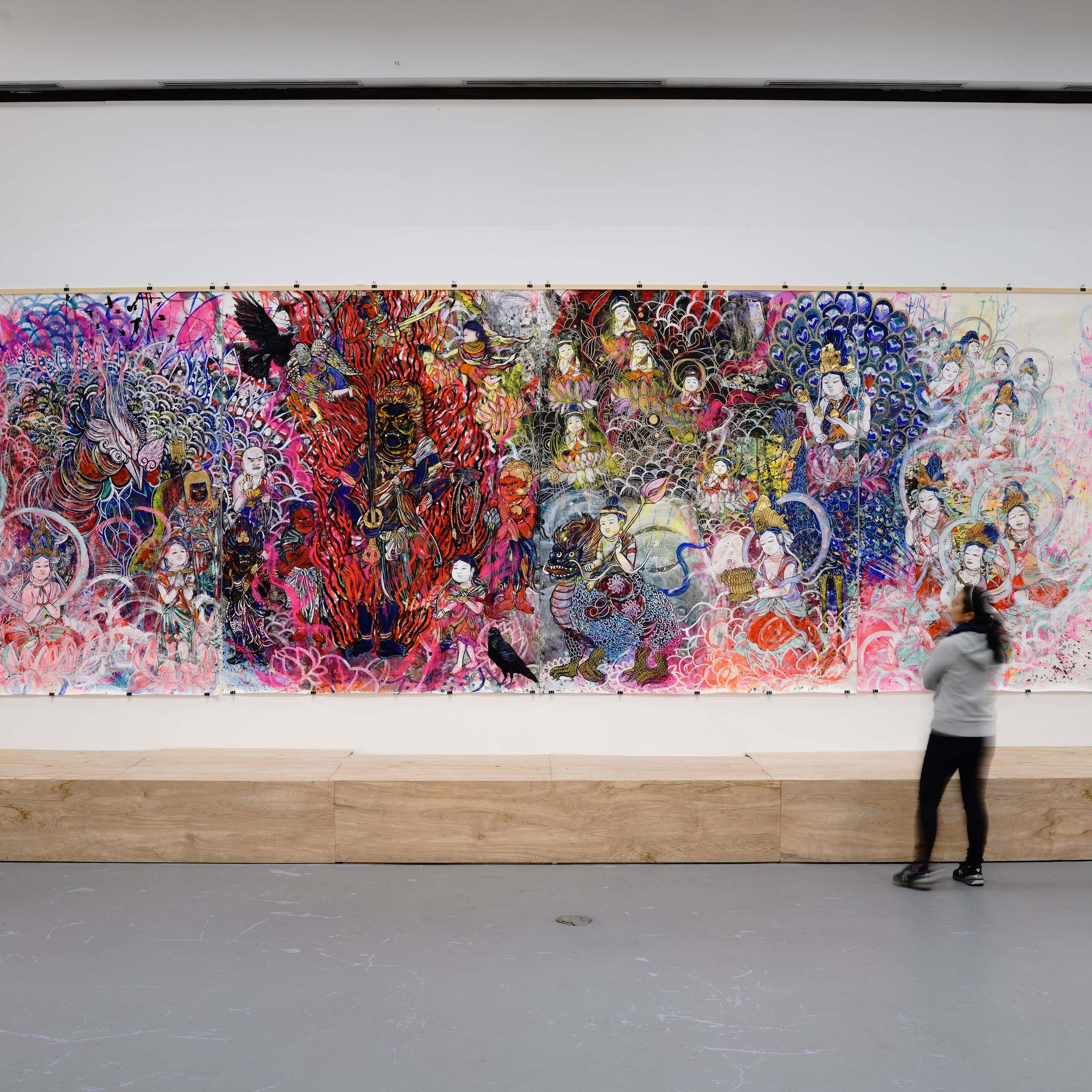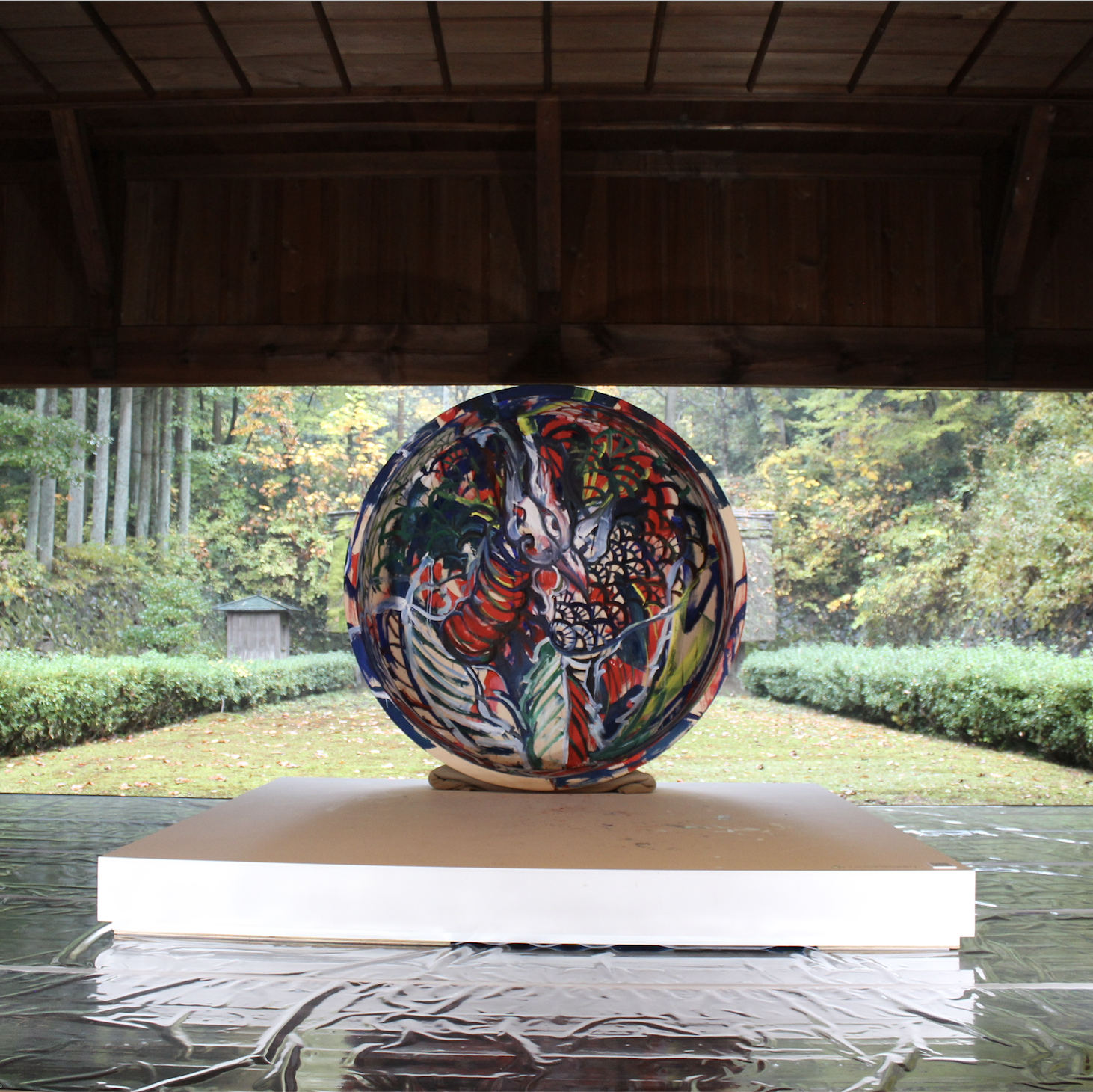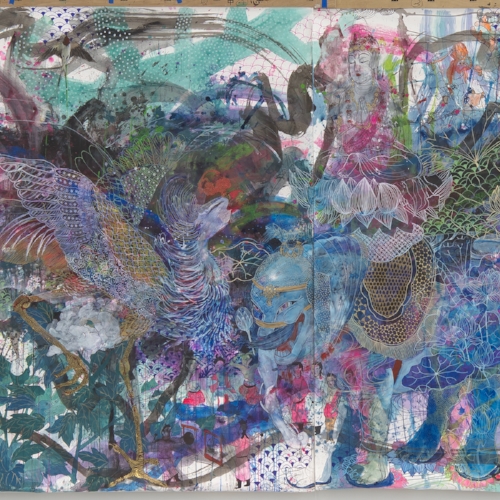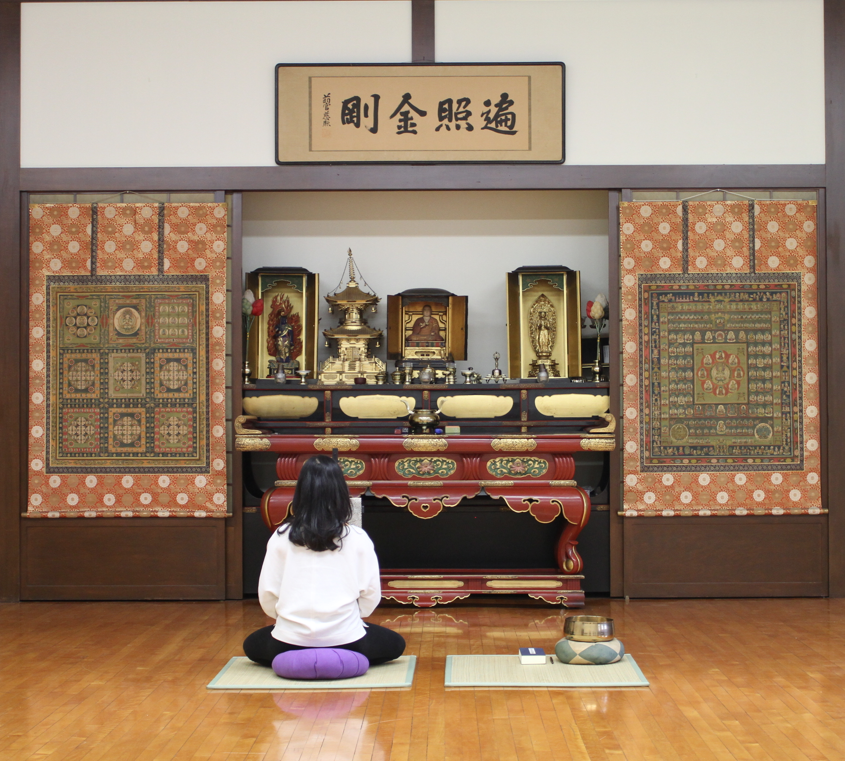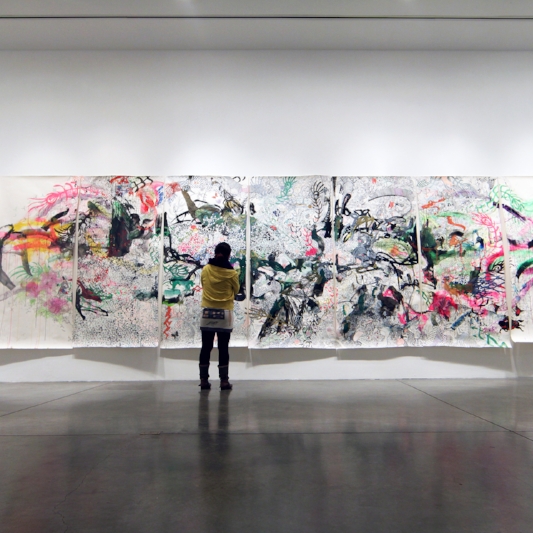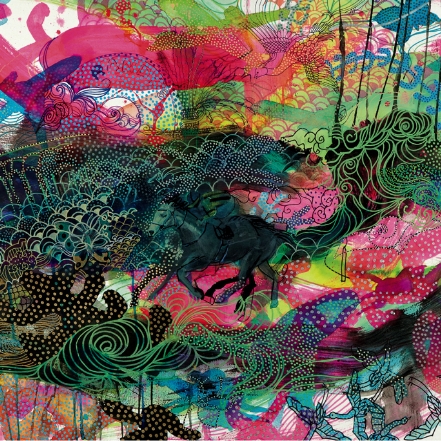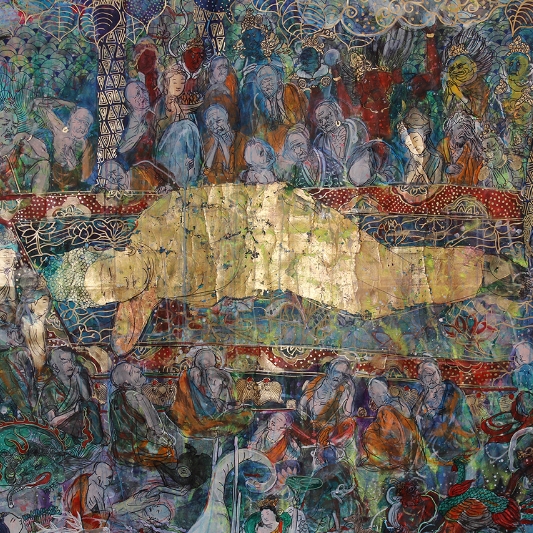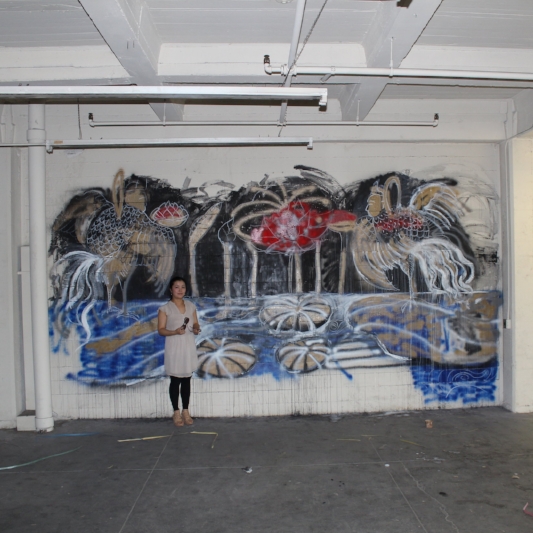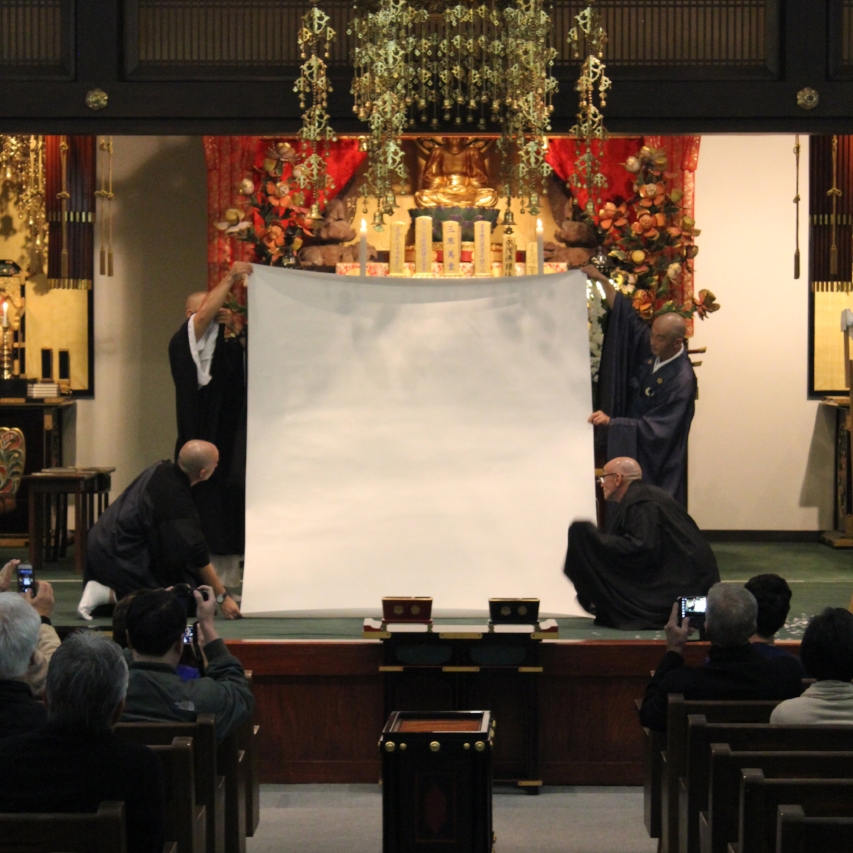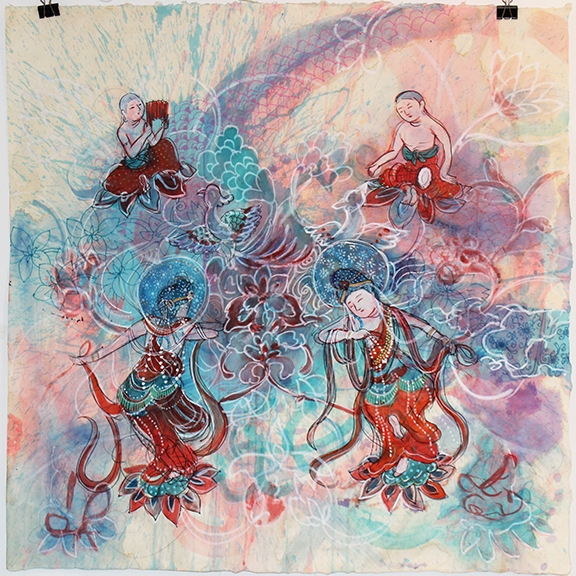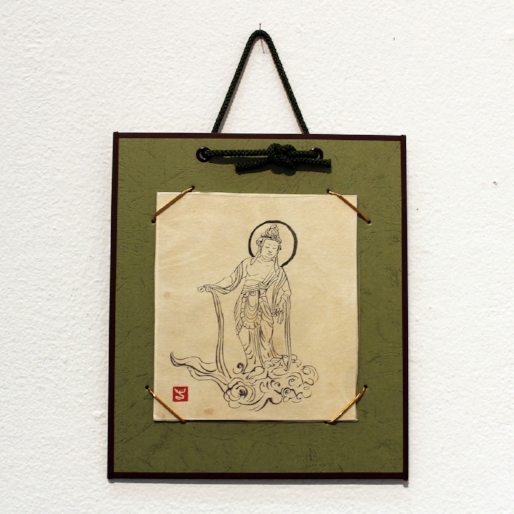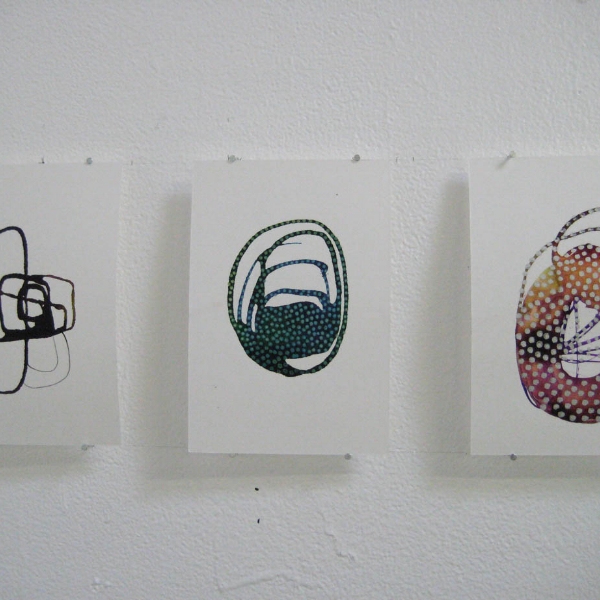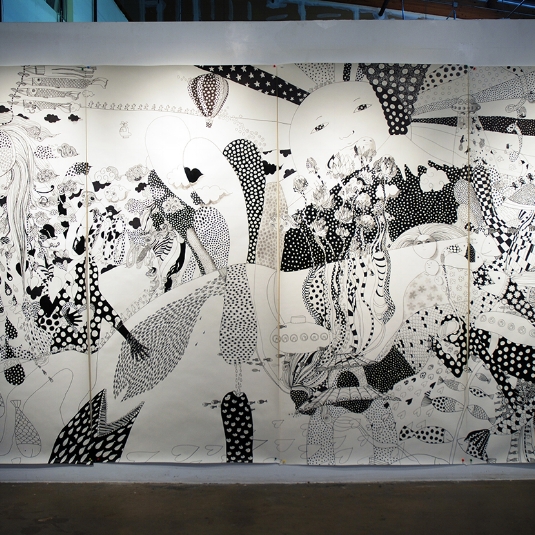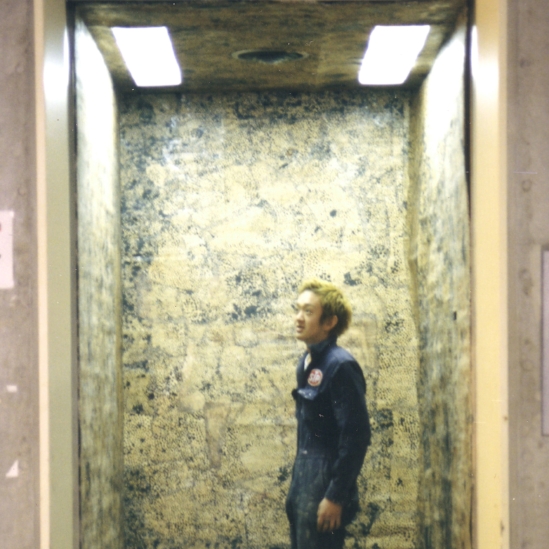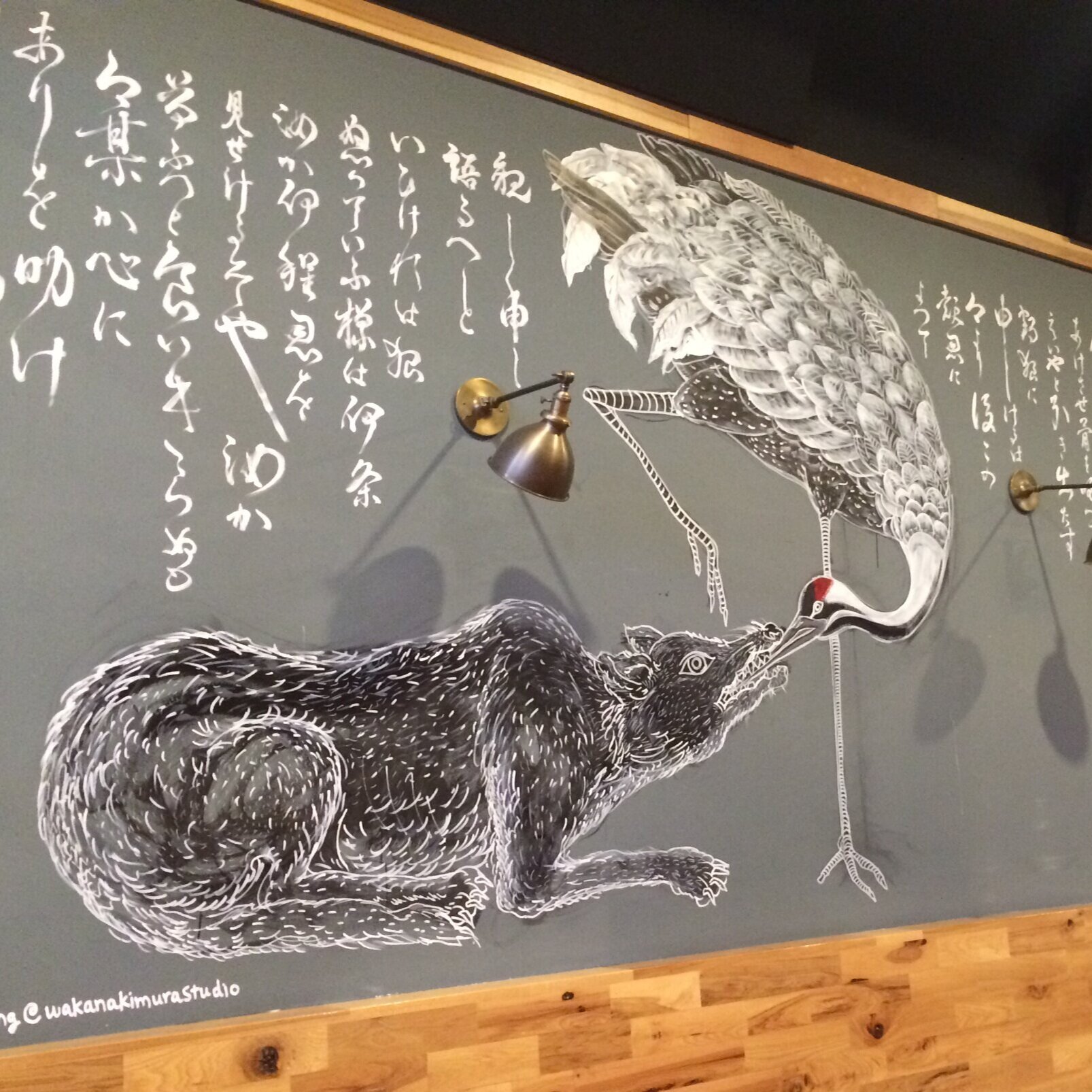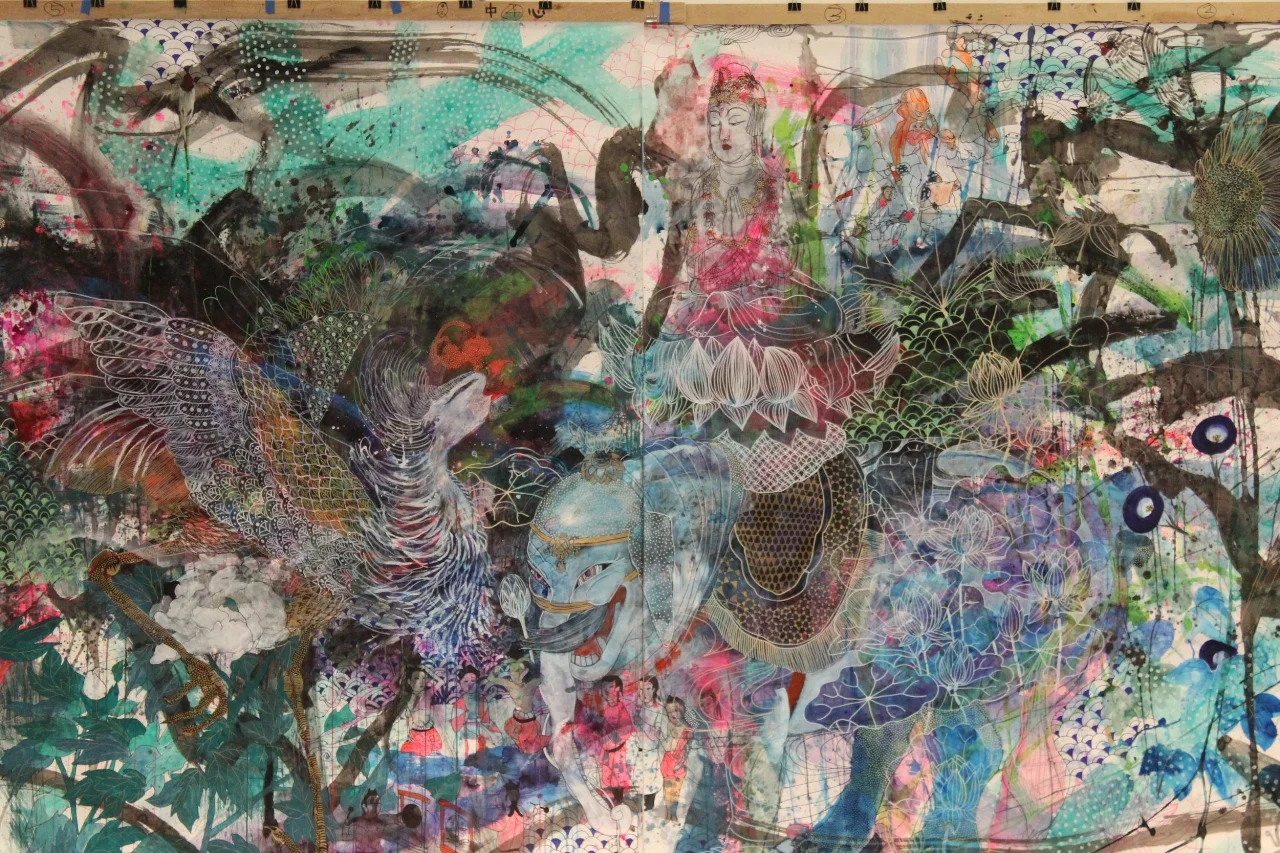

One trifle-beset night, t’was the moon, not I, that saw the pond lotus bloom
おのづから月宿るべき隙もなく池に蓮の花咲きにけり(西行)
Watercolor, Sumi ink, Marker, Acrylic color, Vinyl color on Washi Paper (Daitoku Roll, Machine made in Fukui Prefecture, Japan, Hiromi Paper Inc.)
98 in x 308 in total; four panels: 98 in x 77 in each.


Wakana Kimura: Circles
by Valorie Thomas
(3-3-2015)
I visited Wakana Kimura at her studio at the Japanese American Cultural and Community Center (JACCC), in downtown Los Angeles, where she serves as media arts director and curator. Kimura walked me through the Doizaki Gallery at the JACCC, giving me a guided tour of an exhibition of traditional and contemporary baskets from Japan. She discusses the history and context of the baskets, answers questions, and points out notable details in some of the works, tuning my vision. In the baskets, I recognize Kimura’s own aesthetic of periodicity and continuity. No two baskets remotely resemble one another, except that they are all precisely woven, and often fantastical, structures that intentionally refer to their Japanese cultural context. Kimura explains that each basket has its own story, about an individual artist, the village from which it hails, the work it does in the world—and in the show—and how collectors were moved by the baskets, and thus they ended up on display at the JACCC. Kimura takes me further into the building, closer to the center of her circle, to see a basket tea house of bamboo mounted on a platform, where only the day before dignitaries enjoyed a tea ceremony. She reminds me, as we speak of my great aunt Olive’s time in Japan as an African American Red Cross worker during wartime, that Japanese artists honor imperfections. My aunt’s tea ceremony service is nearly identical to one in Kimura’s curated collection in the blue-gray glaze of the ceramic cup and its unglazed bottom edge, which invites us, through its texture and sound, to contemplate the poetics of roughness along with beauty.
The disciplined bliss of daily practice grounds Kimura’s own artistic process, and has done so since she was eight years old. The Japanese-born artist’s work ranges over a broad terrain that includes vast, multi-panel pieces that combine painting and drawing; intimate daily drawings; portraits of Japanese spiritual scholars; and durational time-based videos that bring all of these together. Her repetitive practice supports the creation of discrete works but also serves, importantly, to establish a process that unfolds over time. Every step of the practice is important individually and as a part of the whole. Kimura’s art is a practice of meditation, contemplation, translation, and expanding the circles of community. In its breadth, Kimura’s work suggests the intense movement and vibration of making paradoxical worlds that are simultaneously contained and uncontainable.
Kimura’s small drawings are mostly watercolors, and everything in her vicinity can be subject material, including street scenes, trees, flowers, incense from ancestor altars, horses, or donuts. This practice is guided by the Japanese principle that all subjects of drawing and painting have equal value. She also tells me that, in Japanese culture, there is “no consideration that abstraction and representation are separate.” She comes from a background in which language is both visual and musical, within the concept of script. Living in the United States, she observes, she must navigate a different cultural imperative—one of hierarchies of meaning and definition. Thus, in the space of duration, color, line, symbol, and abstraction, the artist enacts and becomes translation, past to present to future, across transnational locations, languages, philosophies, and spiritual traditions. She dances across a metaphoric tightrope.
In a 2005 installation in Tokyo, Japan, called Existence as a piece Relation with the other, Kimura painted a series of repetitive circles on canvas panels that line and divide the gallery walls. Marks, dots, circles, lines, and hue travel through shifting landscapes. The installation evoked impressions of migration, layered histories and experiences, and changing perspectives. Her video composition I (2010) contemplates beauty as a state of constantly shifting awareness. In the video, moments appear transient, their physical and material manifestations are continuously dissolving, but their renewal produces duration and constancy. Kimura relies on visual expression as a means of mediating old and new identities. Through her artwork, she attends to memories, locations, literacies, and the vagaries of fragmentation as a person who considers contingency to be a valid mode of knowing and as praxis. For example, in [fill in title and date of one of these works], each time she carefully punctures the paper with incense sticks she is engaged in coaxing the contours of time. These gestures create a web of interconnected relationships bound by liberating practices and intention.
Kimura often uses bold, daring calligraphic flourishes, intense color, and layer upon layer of entangled shapes, lines, and patterned networks of markings. Light travels through and around her work in nuancing murmurs and loud bursts, as if following changes of frequency from soft to blaring. In her newest, 24-foot-long painting, [add title and date here], she begins the work with dramatic calligraphic strokes across its length, loosely framing the structure with a map of the world. Over this map, she layers tighter patterns and imagery that reference Japanese decorative patterns and mythological figures, such as Hou-ou, the phoenix, an avatar of Kanzeon (Guan Shi Yin/Avolokiteshvara), goddess of compassion.
In her artist’s statement, presented in English and Spanish, Kimura alludes to the layered landscapes of her adoptive home of Los Angeles:
I use visual communication to express unification and individuality. . . . I use art as a medium to openly communicate the individual differences among us. Ideally, there is a ripple effect. As with drops of rain in a pond, each drop forms a concentric circle that joins with another concentric circle, and this intertwining has a larger effect. Each individual mark I create enables communication and creates conversation.
Uso la comunicación visual para expresar unidad e individualidad. . . . Uso el arte para comunicar abiertamente las diferencias individuals entre nosotros. Con suerte, se genera una reación en cadena. Como gotas de lluvia en un estanque, cada gota es un circulo concentrico que se une a otro circulo concentrico, y estos encuentros generan un efecto mayor. Cada una de las marcas que creo es capaz de comunicar y establecer un diálogo.
For me, Kimura’s work reflects unanticipated qualities of Southern Californian mestizaje, indicating that, like any good border dweller, she has become accustomed to navigating the interstices and clashes of numerous cultures as they meet in shared spaces sometimes mapped by barbed wire. Her work appears imprinted by the jazz-inspired improvisations, dissonances, make-believe, and dead serious challenges that make up Los Angeles. Her experimental black-and-white mixed-media drawings, such as [give an example here], point to themes of dislocation and repeated re-placements of home, extended family, presence, and identity as a process of constant movement and transformation. Sometimes, in the constellation of dots that the artist calls “marks,” as in [give an example here], the location resembles that of Australian Aborigine paintings telling stories of the dreamtime. Her eye travels the globe, mapping the horizons of converging cultural literacies.
Kimura and I circle outside, to the tiered garden where visitors might pause and where gatherings are held. We make our way to the back edge of the garden, cross the bridge, and return to our starting point. Kimura says her sense of beauty is “always changing,” and she invites me back again.







check more works from the links below…







